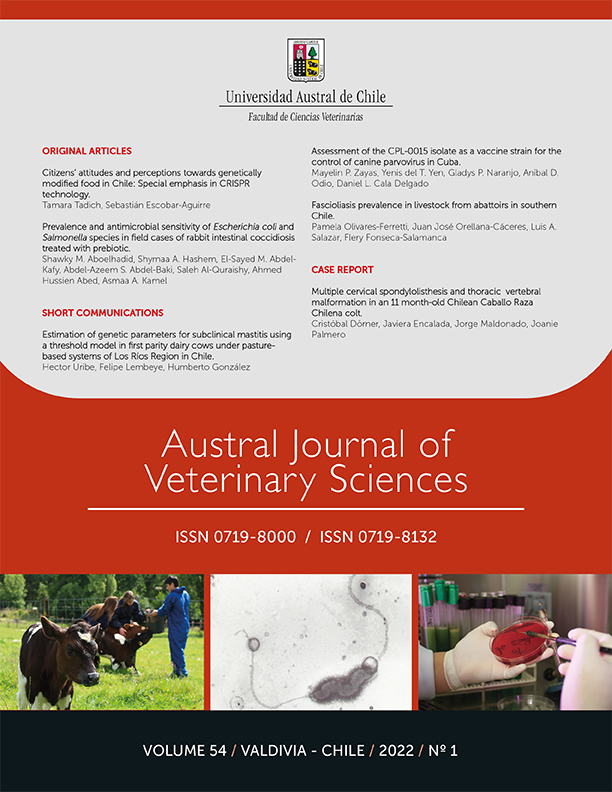Estimation of genetic parameters for subclinical mastitis using a threshold model in first parity dairy cows under pasture-based systems of Los Ríos Region in Chile
Contenido principal del artículo
Resumen
Somatic cell count (SCC) is an indirect measurement to estimate mammary gland health status. This trait provides information regarding the severity of the mammary tissue inflammation in each quarter. Milk samples coming from the farm milk storage vat containing 100,000 to 200,000 cell/mL are considered suspicious, while SCC over 200,000 cell/mL is an indication of subclinical mastitis. Chilean dairy processors penalise farmers monetarily when their bulk tank samples reach levels of 300,000 cell/ mL SCC. The objective of this study was to quantify the additive genetic component of the liability of cows to reach the 300,000 cell/mL threshold. A data set containing the highest SCC test-day record of 10,528 first lactation cows from 15 commercial dairy farms of Los Ríos Region in southern Chile was analysed. The unknown continuous underlying susceptibility of each cow to reach the 300,000 SCC threshold was modelled as a function of a contemporary group formed by the herd, year, and calving season, the regression coefficient of the unknown underlying susceptibility value of a cow on her daily milk yield (MY) and the additive animal genetic effect. Bayesian inference and Gibbs sampling were used to estimate additive and residual variances. The average daily MY and SCC were 17.84±5.25 kg and 125,327±236,297 cell/mL, respectively. The estimated heritability varied from 0.03 to 0.22 and the average was 0.10±0.03. It is concluded that the genetic variability for the susceptibility to reach the 300,000 SCC threshold could be exploited to improve resistance to subclinical mastitis.

